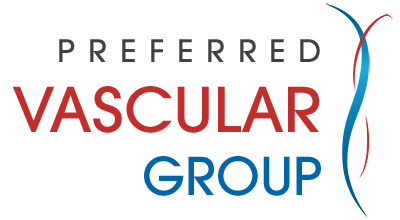Varicose Veins
Varicose veins are twisted, enlarged veins. Any vein may become varicose, but the veins most commonly affected are those in your legs and feet. That’s because standing and walking upright increases the pressure in the veins of your lower body.
For many people, varicose veins and spider veins — a common, mild variation of varicose veins — are simply a cosmetic concern. For other people, varicose veins can cause aching pain and discomfort. Sometimes varicose veins lead to more-serious problems. Varicose veins may also signal a higher risk of other circulatory problems. Treatment may involve procedures by your doctor to close or remove veins.
Varicose veins are common and usually aren’t a sign of a serious problem. But in some cases, varicose veins can be a sign of a blockage in the deeper veins called deep vein thrombosis. If you have this problem, you may need treatment for it.
Making the diagnosis of varicose veins is a relatively easy task. They are easy to identify just by their characteristic appearance on physical examination.
The health care professional most likely will take a thorough medical history and examination looking not only for the extent of the patient’s varicose veins, but also for potential risk factors.
- He or she may do any of several simple tourniquet tests to identify points of reverse blood flow. The simplest test uses only a blood pressure cuff.
- Another useful device aiding in localizing the extent of the problem is a Doppler ultrasound. This handheld device is skimmed over the surface of the leg to map out the veins and faulty valves. This device is similar to those used in pregnancy to identify the developing fetus.
- Duplex scanning, a similar but more detailed test, can also be done to rule out the presence of clots in the deeper veins.
- Magnetic resonance venography is another test performed when the Duplex scan test is unclear. This test can even look for blood clots in the deep veins.
- Blood (laboratory) tests are not helpful in making a diagnosis of varicose veins
Symptoms
What are the symptoms?
Varicose veins look dark blue, swollen, and twisted under the skin. Some people do not have any symptoms. Mild symptoms may include:
- Heaviness, burning, aching, tiredness, or pain in your legs. Symptoms may be worse after you stand or sit for long periods of time.
- Swelling in your feet and ankles.
- Itching over the vein.
More serious symptoms include:
- Leg swelling.
- Swelling and calf pain after you sit or stand for long periods of time.
- Skin changes, such as: Color changes.
- Dry, thinned skin.
- Inflammation.
- Scaling.
- Open sores, or you may bleed after a minor injury.
Venous insufficiency is a very common condition resulting from decreased blood flow from the leg veins up to the heart, with pooling of blood in the veins. Normally, one-way valves in the veins keep blood flowing toward the heart, against the force of gravity. When the valves become weak and don’t close properly, they allow blood to flow backward, a condition called reflux. Veins that have lost their valve effectiveness become elongated, rope-like, bulged, and thickened. These enlarged, swollen vessels are known as varicose veins and are a direct result of increased pressure from reflux. A common cause of varicose veins in the legs is reflux in a thigh vein called the great saphenous, which leads to pooling in the visible varicose vein below.
Symptoms caused by venous insufficiency and varicose veins include aching leg pain, easy leg fatigue, and leg heaviness, all of which worsen as the day progresses. Many people find they need to sit down in the afternoon and elevate their legs to relieve these symptoms. In more severe cases, venous insufficiency and reflux can cause skin discoloration and ulceration which may be very difficult to treat. One percent of adults over age 60 have chronic wounds known as ulcers.
People without visible varicose veins can still have symptoms. The symptoms can arise from spider veins as well as from varicose veins, because, in both cases, the symptoms are caused by pressure on nerves by dilated veins.
Risk Factors
Varicose veins are caused by weakened valves and veins in your legs. Normally, one-way valves in your veins keep blood flowing from your legs up toward your heart. When these valves do not work as they should, blood collects in your legs, and pressure builds up. The veins become weak, large, and twisted. Varicose veins often run in families. Aging also increases your risk.
Being overweight or pregnant or having a job where you must stand for long periods of time increases pressure on leg veins. This can lead to varicose veins.
Treatments
Lifestyle Changes
Home treatment may be all you need to ease your symptoms and keep the varicose veins from getting worse.
You can:
- Wear compression stockings. Compression stockings are designed to decrease tension on the veins in the legs. While they generally provide symptomatic relief, they do not correct the underlying problem or prevent vein disease from getting worse. Vein disease sufferers often have difficulty regularly wearing the stockings since they can be hot and uncomfortable.
- Prop up (elevate) your legs.
- Avoid long periods of sitting or standing.
- Get plenty of exercise.
Treatment Options
Ambulatory Phlebectomy Minimally Invasive Vein AblationIf you would like to schedule an appointment at Preferred Vascular Group to have a consult with a Board-Certified physician or would like to have one of our highly trained care providers reach out to you, please click on a button below:
